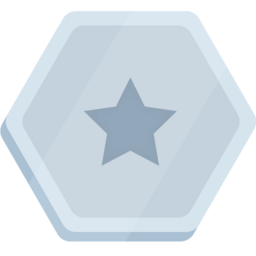Mr Linh SEO Mentor
Member since 2023
Silver League
6620 points
Member since 2023

Gen AI Agents: Transform Your Organization is the fifth and final course of the Gen AI Leader learning path. This course explores how organizations can use custom gen AI agents to help tackle specific business challenges. You gain hands-on practice building a basic gen AI agent, while exploring the components of these agents, such as models, reasoning loops, and tools.
Transform Your Work With Gen AI Apps is the fourth course of the Gen AI Leader learning path. This course introduces Google's gen AI applications, such as Gemini for Workspace and NotebookLM. It guides you through concepts like grounding, retrieval augmented generation, constructing effective prompts and building automated workflows.
Gen AI: Navigate the Landscape is the third course of the Gen AI Leader learning path. Gen AI is changing how we work and interact with the world around us. But as a leader, how can you harness its power to drive real business outcomes? In this course, you explore the different layers of building gen AI solutions, Google Cloud’s offerings, and the factors to consider when selecting a solution.
Gen AI: Unlock Foundational Concepts is the second course of the Gen AI Leader learning path. In this course, you unlock the foundational concepts of generative AI by exploring the differences between AI, ML, and gen AI, and understanding how various data types enable generative AI to address business challenges. You also gain insights into Google Cloud strategies to address the limitations of foundation models and the key challenges for responsible and secure AI development and deployment.
Gen AI: Beyond the Chatbot is the first course of the Gen AI Leader learning path and has no prerequisites. This course aims to move beyond the basic understanding of chatbots to explore the true potential of generative AI for your organization. You explore concepts like foundation models and prompt engineering, which are crucial for leveraging the power of gen AI. The course also guides you through important considerations you should make when developing a successful gen AI strategy for your organization.
As the use of enterprise Artificial Intelligence and Machine Learning continues to grow, so too does the importance of building it responsibly. A challenge for many is that talking about responsible AI can be easier than putting it into practice. If you’re interested in learning how to operationalize responsible AI in your organization, this course is for you. In this course, you will learn how Google Cloud does this today, together with best practices and lessons learned, to serve as a framework for you to build your own responsible AI approach.
This course teaches you how to create an image captioning model by using deep learning. You learn about the different components of an image captioning model, such as the encoder and decoder, and how to train and evaluate your model. By the end of this course, you will be able to create your own image captioning models and use them to generate captions for images
This course introduces you to the Transformer architecture and the Bidirectional Encoder Representations from Transformers (BERT) model. You learn about the main components of the Transformer architecture, such as the self-attention mechanism, and how it is used to build the BERT model. You also learn about the different tasks that BERT can be used for, such as text classification, question answering, and natural language inference.This course is estimated to take approximately 45 minutes to complete.
This course will introduce you to the attention mechanism, a powerful technique that allows neural networks to focus on specific parts of an input sequence. You will learn how attention works, and how it can be used to improve the performance of a variety of machine learning tasks, including machine translation, text summarization, and question answering. This course is estimated to take approximately 45 minutes to complete.
This course gives you a synopsis of the encoder-decoder architecture, which is a powerful and prevalent machine learning architecture for sequence-to-sequence tasks such as machine translation, text summarization, and question answering. You learn about the main components of the encoder-decoder architecture and how to train and serve these models. In the corresponding lab walkthrough, you’ll code in TensorFlow a simple implementation of the encoder-decoder architecture for poetry generation from the beginning.
This course introduces diffusion models, a family of machine learning models that recently showed promise in the image generation space. Diffusion models draw inspiration from physics, specifically thermodynamics. Within the last few years, diffusion models became popular in both research and industry. Diffusion models underpin many state-of-the-art image generation models and tools on Google Cloud. This course introduces you to the theory behind diffusion models and how to train and deploy them on Vertex AI.
This is an introductory level micro-learning course that explores what large language models (LLM) are, the use cases where they can be utilized, and how you can use prompt tuning to enhance LLM performance. It also covers Google tools to help you develop your own Gen AI apps.
This is an introductory-level microlearning course aimed at explaining what responsible AI is, why it's important, and how Google implements responsible AI in their products. It also introduces Google's 7 AI principles.
This is an introductory level microlearning course aimed at explaining what Generative AI is, how it is used, and how it differs from traditional machine learning methods. It also covers Google Tools to help you develop your own Gen AI apps.